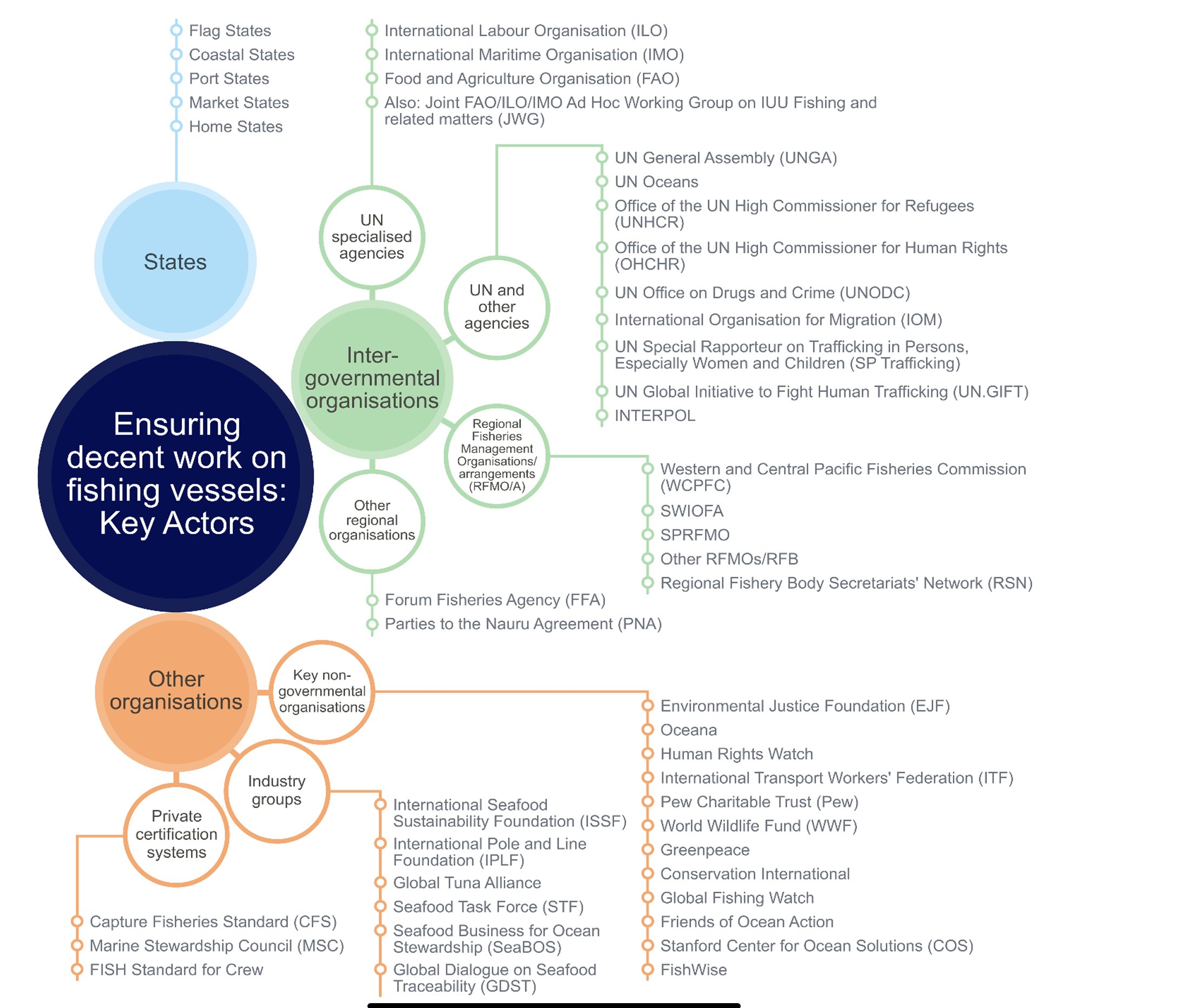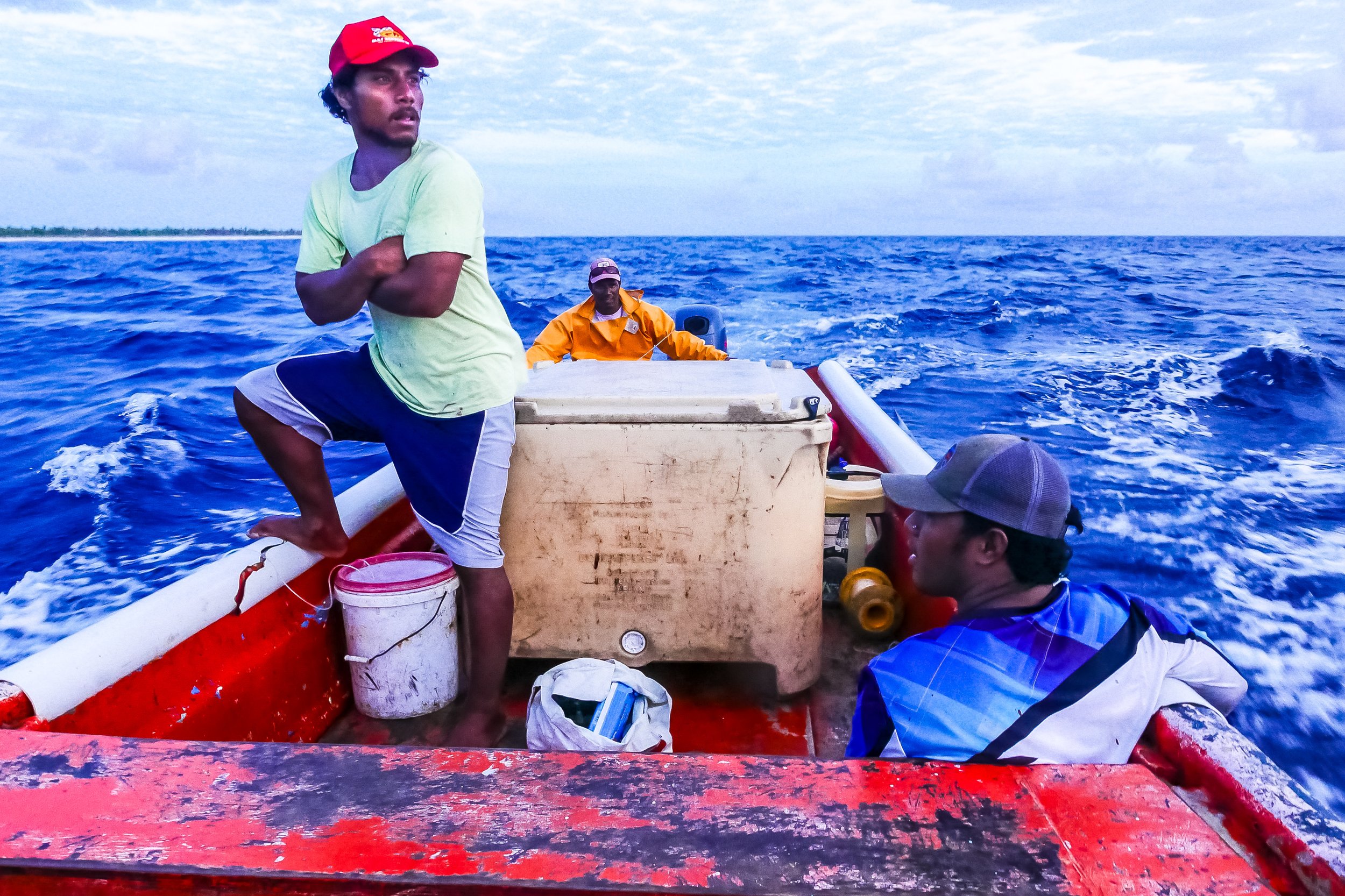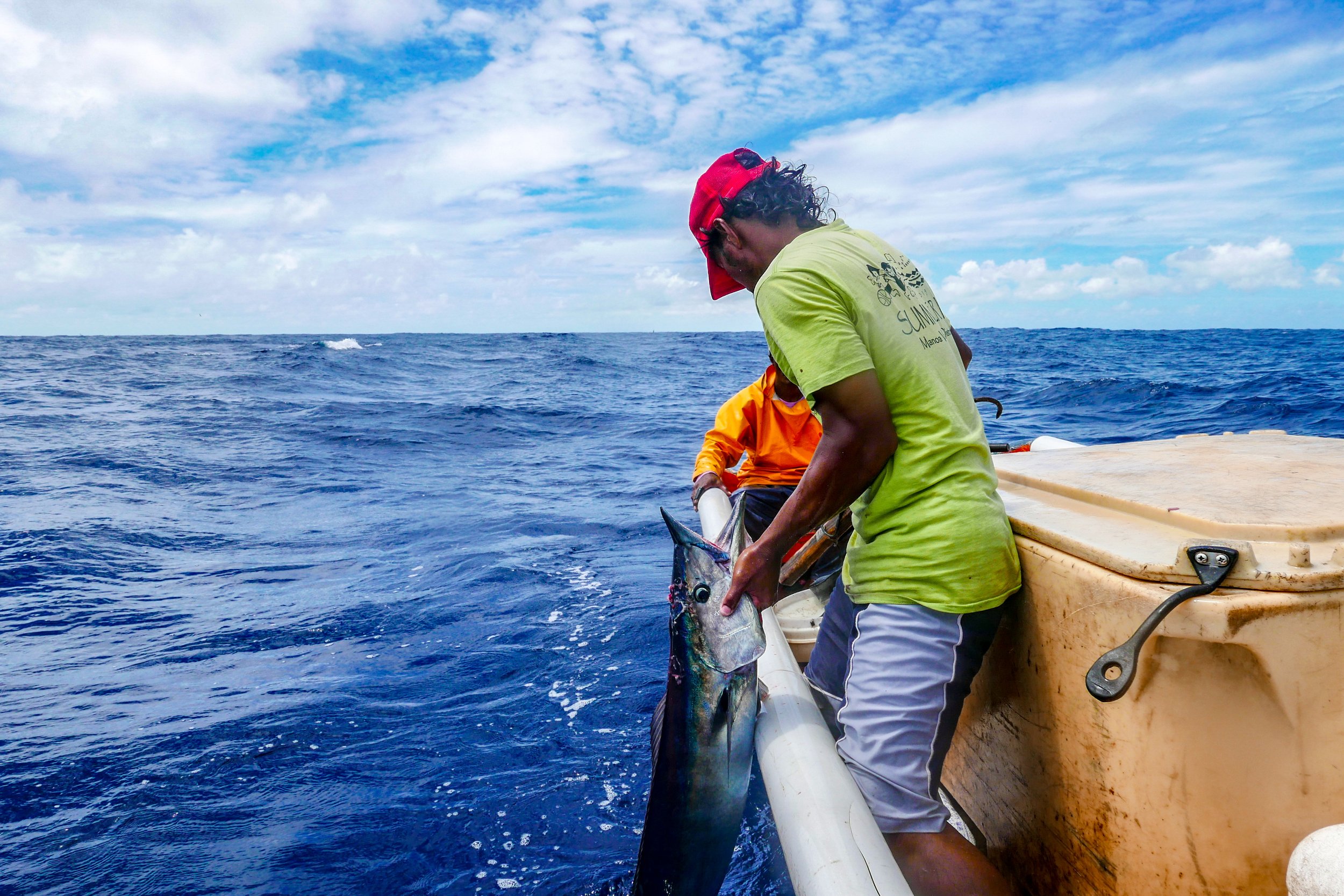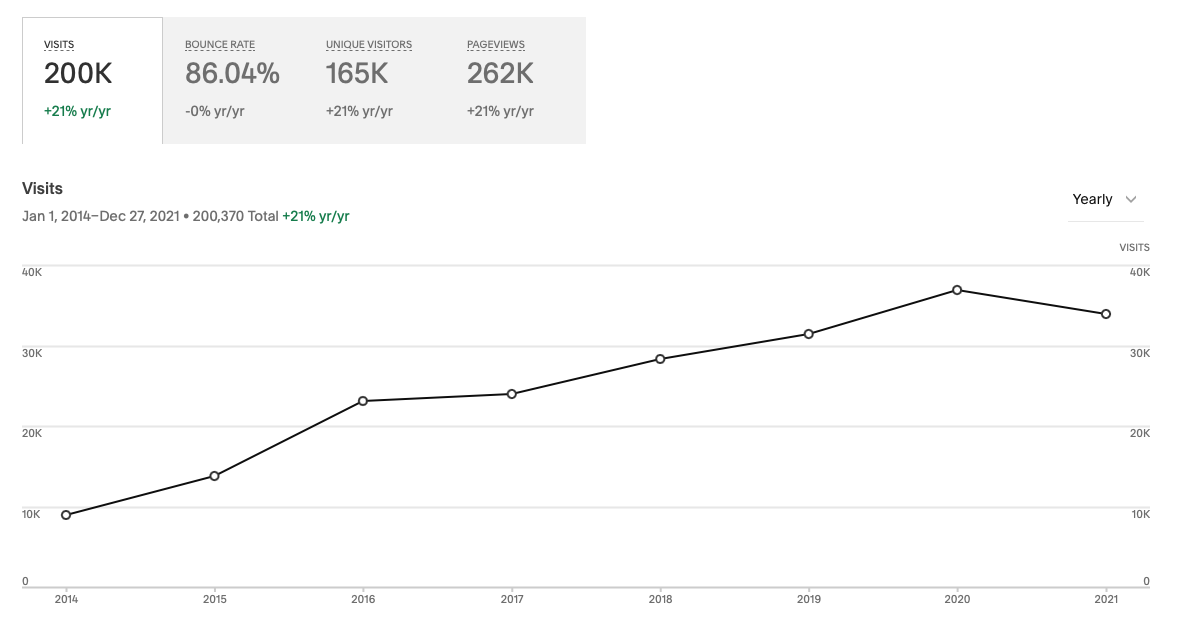I had an embargo to talk about it since we finished in late October, and I been sitting on this post since then!
So here it is: FFA’s Quantification of IUU Fishing in the Pacific Islands Region - a 2020 Update
Nowhere else, in any ocean basin, there is a body like FFA nor the strength of collaboration among coastal states and regional bodies. While other oceans talk (and mostly blame others) on IUU fishing, at FFA we are measuring it, in fact, we used 2015 one to guide our MCS efforts and to adjust our data granularity and collection points to have better and more accurate data for this one.
The estimates went down around 50% across the range of areas revised. Not to say that is all good and perfect… but gosh we need good news!!! For the last few weeks I have been part of a few panels and conferences on IUU in fisheries… and all I hear is the well-trialled litany of doom but very little by way of practical suggestions.
The assumption that unlicensed fishing is rampant, has been proven false again, the study reaffirm that misreporting of catch and harvest of tuna contributed an estimated 89% of the volume of IUU fishing. Only 5% of the total IUU volume was estimated to be due to various forms of unlicensed fishing. The rest was due to non-compliance with license conditions and post-harvest offences, yet the estimated volumes of these offences dropped from 306,440 tonnes in the 2015 estimate, to 192,186 tonnes presently.
The study highlights areas, that I have been working (and writing) a lot over the years, particularly that while the purse seine fishery is subject to strong MCS arrangements, including 100% observer coverage and a requirement to tranship catch in port, equivalent measures are not in place for the longline fishery. A higher proportion of longline fishing occurs on the high seas, where vessels can tranship catch, often with very limited monitoring in place.
The following strategies for validating the volume and species of tuna in longline fisheries are recommended:
I recommend you read the report… or for a lighted version check this little video animation in the meantime, I quote the executive summary.
BACKGROUND AND APPROACH
Illegal, unreported and unregulated (IUU) fishing is a recognised global problem that undermines the integrity of responsible fisheries management arrangements and results in lost value to coastal states (e.g. FAO, 2002; Agnew et al, 2009). The first attempt at quantifying the value and volume of IUU fishing in tuna fisheries within the Pacific Islands region was undertaken in 2016 using data from 2010-2015 (MRAG Asia Pacific, 2016). That study estimated the total volume of the product either harvested or transhipped involving IUU activity in Pacific tuna fisheries was 306,440t, with an ex-vessel value of $616.11m. Nevertheless, the authors noted that the data and information underlying many of the estimates were highly uncertain and that the outputs should be seen as a ‘first cut’.
In order to assess changes in the nature and extent of IUU fishing since that time, this study was commissioned as part of the Global Environment Facility-funded Pacific Islands Oceanic Fisheries Management Project II (OFMP II) to undertake a ‘2020 update’ of the original estimates. Broadly, the aim was to undertake an
‘apples vs apples’ update of the original estimates, using a consistent methodology and taking into account the latest available information. The study period covered the years 2017-2019. Importantly, this preceded any COVID-19 related impacts on monitoring, control and surveillance (MCS) and IUU activity in the region.
Broadly, we used a ‘bottom up’ approach to quantify IUU fishing activity across key IUU risks in four categories: (i) unlicensed/unauthorised fishing, (ii) misreporting, (iii) non-compliance with other license conditions (e.g. shark finning) and (iv) post- harvest risks (e.g. illegal transhipping).
‘Best estimate’ and minimum/maximum range values were generated for each risk, taking into account the best available information. Monte Carlo simulation was then used to produce probabilistic estimates of IUU activity, taking into account probability distributions assigned within the minimum and maximum range values. Using this approach, estimates of IUU volume and value were developed for each of the three main fishing sectors - purse seine (PS), tropical longline (TLL) and southern longline (SLL) – and then aggregated to produce an overall estimate for Pacific Islands region tuna fisheries.
While the same basic approach to estimating IUU was used between the 2016 and 2020 studies, a number of changes were made to the information underlying estimation of individual risks. In some cases, this was driven by new information becoming available (e.g. to estimate the scope for illegal transhipment), while in other cases the information previously used to support estimates for the 2016 study was no longer available. For some risks, these changes of information had substantial impacts on the estimated volume and value between studies.
ESTIMATED VOLUME AND VALUE OF IUU FISHING
Our simulations suggest the best estimate total annual volume of product either harvested or transhipped involving IUU activity in Pacific tuna fisheries during the 2017-19 period was 192,186t, with 90% confidence that the actual figure lies within a range of 183,809t to 200,884t. Based on the expected species composition and markets, the ex-vessel value of the best estimate figure is $333.49m. The 90% confidence range is between $312.24m and $358.17m. For context, the estimated IUU volume figure is around 6.5% of the total WCPFC Convention Area (WCPFC-CA) catch in 2019.
This result is a considerable reduction from the ‘first cut’ estimates in the 2016 study of 306,440t (276,546t to 338,475t) with a best estimate value of $616.11m ($517.91m to $740.17m). The reduction was primarily driven by substantial reductions in estimates for illegal transhipping and FAD fishing during the closure period (in turn driven by the use of better and different information, respectively) as well as the removal of the ‘unauthorised landings in foreign ports’ risk. Overall figures were also influenced by changes in fishery dynamics (e.g. catch, effort, price).
Amongst the four categories of risk identified here, the largest contribution to the overall IUU volume was made by misreporting, accounting for 89% of the total volume. Importantly, much of this volume was driven by misreporting and misidentifying target species in the purse seine sector for which challenges exist in making accurate estimates of catch at sea. The various types of unlicensed fishing collectively accounted for 5% of the overall estimated IUU volume, while non-compliance with license conditions and post-harvest offences accounted for 3% each.
Of the three main sectors assessed, the estimated volume of IUU products was highest in the purse seine sector, accounting for 72% of the overall volume. Nevertheless, much of the estimated volume in this sector was driven by estimates for misreporting for which mechanisms exist (through 100% observer coverage) to correct any errors in catch reports and, given the nature of access arrangements under the VDS, it is likely that economic rents associated with any misreporting would be captured anyway.
This result should be seen in that context. The tropical longline and southern longline sectors accounted for 21% and 7% of the overall volume respectively. The purse seine fishery also contributed to slightly under half the overall ex-vessel of IUU product ($152.26m), although the higher market value of target species in the longline fisheries meant that TLL sector made a proportionally higher contribution by value (40%) than volume to overall estimates. The southern longline fishery had the lowest overall estimates of IUU product value (14%).
Of the main target species, yellowfin (YFT) accounted for the highest volume of IUU product, making up 33% of the total estimated IUU volume, and 25% of the ex-vessel value. The total estimated IUU volume of YFT equated to around 9.4% of the estimated total catch of YFT in the WCPFC-CA area during 2019. However, because much of the YFT volume is driven by misreporting in the purse seine fishery which is subject to 100% observer coverage, this should not result in ‘unaccounted for’ catch. Skipjack (SKJ) accounted for the next highest volume, making up around 27% of the overall estimated volume, but only 20% of the overall ex-vessel value given its lower market price relative to other species.
The total estimated IUU volume of SKJ equated to around 2.5% of the estimated total catch of SKJ in the WCPFC-CA area in 2019. Bigeye (BET) accounted for 17% of the overall estimated IUU volume, but 20% of the ex-vessel value. The proportionally higher contribution to the ex-vessel value total reflects the fact that much of the estimated IUU volume came from the longline sector which achieves relatively high market prices. The total estimated IUU volume of BET equates to around 24.3% of the estimated total catch of BET in the WCPFC-CA area during 2019. Importantly, this does not necessarily mean that 24.3% of additional BET have been taken in addition to reported figures. For example, some of the BET estimates relate to over-reporting in the purse seine fishery. Albacore (ALB) accounted for 2% of the overall estimated IUU volume and total ex-vessel IUU value. The total estimated ALB IUU volume equates to around 2.8% of the estimated total ALB catch in the WCPFC-CA area in 2019.
ANALYSIS AND MAIN MESSAGES
Apart from the headline volume and value estimates, there are a number of key messages arising from the analysis:
The reduction in estimates since 2016 is positive, but should be seen in context - The overall volume and value of IUU estimated in this 2020 update are a substantial reduction on those from 2016. Broadly, this is a very positive result for the region and its MCS efforts, but should be seen in context. The 2016 estimates were a ‘first cut’ with highly uncertain data across a number of key risk areas. On that basis, estimates were kept deliberately broad to account for high levels of uncertainty. For the 2020 study, new information became available to estimate some risks – most notably illegal transhipping and longline misreporting – while information previously used to quantify risks for the 2016 study were not available for the current study period. Broadly, it was these changes in the information base that produced the biggest overall changes in volume and value estimates. In addition, incorporating one new risk (exceeding effort limits) and removing another (unauthorised landing of catch in foreign ports) together with changes in fishing effort, catch rates and fish price also influenced overall estimates. In practice, the 2020 estimates should be seen as the next evolution in an ongoing process to refine approaches to quantify the nature and scale of IUU in the Pacific region;
Cooperation works - While IUU fishing in its various guises will require ongoing attention from FFA members, there is little doubt that the MCS measures FFA members and their partners/regional secretariats have implemented over recent decades have had a profound impact on both the nature and volume of IUU fishing in the region. Cooperative regional MCS measures such as the establishment of the FFA Vessel Register and Good Standing requirement, the agreement of Harmonised Minimum Terms and Conditions (HMTCs) for foreign fishing vessel access, the establishment of the FFA Vessel Monitoring System (VMS), the development of common regional data collection protocols and forms, the establishment of regional Pacific Island Regional Fisheries Observer (PIRFO) standards and training for observers, the Niue Treaty and Subsidiary Arrangement to facilitate cooperation on MCS including information sharing and coordinated Regional Operations, amongst others, have substantially strengthened the MCS environment across all member zones compared to individual members acting alone. The relatively low estimates of IUU activity in the FFA region compared to many other parts of the world is practical evidence of the MCS framework’s success;
Estimates continue to be dominated by the licensed fleet - A key outcome of the 2016 study was that estimates of IUU volume and value were dominated by the licensed fleet. The 2020 update shows a similar pattern with unlicensed fishing accounting for only 5% of overall IUU activity;
Unlicensed fishing remains an issue at the margins - unlicensed fishing continued to be an issue at the margins, both figuratively and literally. Overall, evidence for unlicensed fishing by vessels on the FFA VR and/or WCPFC RFV was very limited with no confirmed instances of unlicensed fishing by these vessels detected during regional operations and few national level detections/prosecutions during the study period. The main exception to this is on the fringes of the FFA region, and in particular on the western fringe adjacent to the domestic fleets of south east Asian countries, where evidence of regular incursions was stronger;
Priorities for strengthening MCS measures are in the longline sectors– Of the two main gear types operating in the Pacific Islands region, the purse seine fleet is subject to comparatively very strong MCS arrangements including 100% observer coverage, a requirement to tranship in port and a requirement for e-reporting under the Parties to the Nauru Agreement’s (PNA) Vessel Days Scheme (VDS). Moreover, the majority of fishing effort occurs in EEZs subject to strong coastal State MCS. In contrast, MCS arrangements in place for the longline sector are weaker with lower observer coverage, a far higher proportion of effort on the high seas, and a higher proportion of the catch transhipped at sea which limits opportunities for port State MCS measures. Particular focus should be on strengthening measures to monitor and validate catch both on longline vessels and as it moves through the supply chain. Given the shared nature of stocks in the region, it is important that strong catch validation measures are applied across the full footprint of stocks, including on the high seas;
Estimates of illegal transhipping have come down, but monitoring and control remain a work in progress - The availability of WCPFC Transhipment Declaration information together with Global Fishing Watch’s (GFW) Automatic Identification System (AIS) dataset has provided considerably better information on the scope for unauthorised transhipment than was available to the 2016 study. Broadly, this has led to a substantial reduction in overall estimates of volume and value. Nevertheless, important areas of uncertainty remain in the at sea transhipment component of the longline supply chain and monitoring and control remain a work in progress. In particular, improvements are required to strengthen the implementation of the observer program such that information provided by vessels on the volume and species composition of fish transhipped can be validated against independent observer estimates;
‘IUU’ is not straightforward – while the formal definition of ‘IUU fishing’ in the IPOA-IUU is relatively clear in theory, applying it for the purposes of quantifying its nature and extent presents a range of practical challenges. In addition to the inevitable uncertainties in the underlying data, resolving what should, and shouldn’t, be considered in estimates frequently requires judgements that can have a large impact on overall volume and value figures;
Ex-vessel value is not a good indicator of actual loss to FFA members– this is because the full value of the catch is not returned to coastal states under normal circumstances (only a proportion of total revenue is, typically through access fees). A better benchmark of revenue forgone by Pacific Island countries is likely to be the rent generated by vessels from IUU activity, however, even then the nature of access arrangements such as the VDS mean that economic rents are associated with many IUU activities (e.g. misreporting) are likely to be captured anyway. Taking into account estimates of profitability during the study period in the purse seine and longline sectors, as well as the likelihood that rents associated with some risks (notably misreporting in the purse seine sector) are likely to be captured through the VDS, we estimate the rent associated with ex-vessel IUU value to be $43.18m. This is a considerable reduction on the 2016 estimate ($152.67m), but may still overestimate actual loss. More accurate estimates would require additional analysis of the unique circumstances of each IUU risk.
WHAT ADDITIONAL MEASURES CAN BE TAKEN TO BETTER DETER AND ELIMINATE IUU?
As outlined in the 2016 study, considerable efforts have been taken at the national, sub-regional (FFA/SPC/PNA) and regional levels (WCPFC) to mitigate IUU fishing in Pacific tuna fisheries. Moreover, a range of additional MCS measures have been taken since then (e.g. establishment of the Pacific Maritime Security Program - PSMP, strengthening of longline unloadings monitoring coverage in FFA member ports) which have better informed the 2020 update estimates and contributed to the lower overall estimates.
Nevertheless, ongoing uncertainties in relation to a number of key risk areas highlight priority areas for future MCS development. In the longline sectors, the priority is to strengthen measures to monitor and validate catch of licensed vessels throughout the supply chain. Despite good improvements in some areas (e.g. unloadings coverage in FFA ports), current monitoring arrangements remain limited for some fleets. Measures that could be taken to strengthen monitoring include strengthening observer coverage (for those longline fleets not meeting the 5% WCPFC benchmark, as well as FFA domestic fleets), more active cross-verification of independent data sources to identify reporting discrepancies (e.g. logsheet Vs unloading, etc), an enhanced focus on investigating reporting offenses, wider use of electronic reporting and monitoring, and the development of an effective catch documentation scheme (CDS) for key species. In addition, more effective monitoring and control of at-sea transshipment is required including strengthening arrangements for the implementation of the transshipment observer program.
In the purse seine sector, notwithstanding recent complications arising from COVID- 19 restrictions, the MCS arrangements in place are considerably stronger than those for longline. Priorities include continuing efforts to validate estimates of catch composition and monitoring and control of FAD usage
—
So this set us for the following priorities until the next one:
As in the 2016, the study concluded that the main priorities for strengthening MCS are in the longline sectors across both the tropical tuna and southern longline fisheries.
The key issue is to continue to strengthen catch monitoring/validation throughout the supply chain a range of possible measures including greater use of analytical tools to cross-verify logsheet reporting and active follow up of discrepancies, increased observer coverage and utilisation of electronic monitoring and a focus on the roll out of Catch Documentation Schemes (CDS). (CDS is one of my babies)
There is also a need to strengthen transhipment monitoring and control and build capacity to independently validate transhipment declarations and activity. This includes a focus on better monitoring of offloading vessels, both in port and at sea and promoting electronic monitoring or 100% observer coverage as a condition of high seas transhipment?
We need to keep being proactive in the review of CMM 09 – 06 on transhipment and properly define the application of ‘impractical’ in allowing for high seas transhipment for longline vessels and promoting longline transhipment in designated ports and the associated enforcement of measures to validate transhipment reporting and records.
The study confirms that the purse seine sector is generally subject to strong MCS and the main needs are to ensure good systems are in place to validate catch composition and that effective control of FAD usage and registration and tracking in place
The study also confirmed the important priority of ensuring that systems were in place across the region to ensure the ongoing and enhanced monitoring and analysis of key metrics in support of more ore real-time analysis of key risks and trends. This will require systematic collection, analysis and understanding of MCS data in the support of the MCS continuous improvement framework agreed.
—



































